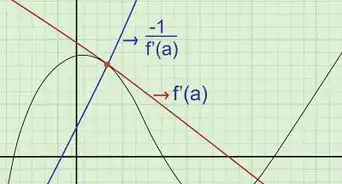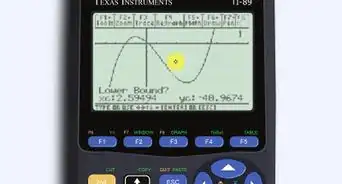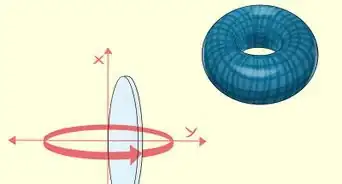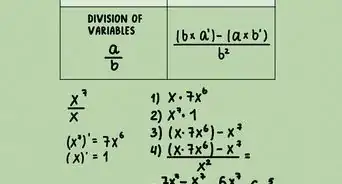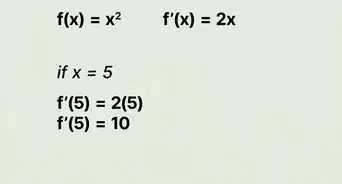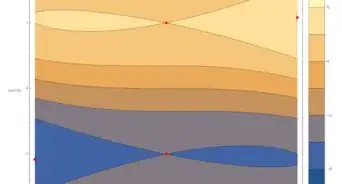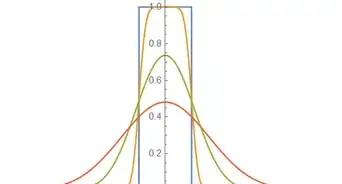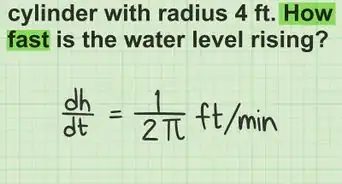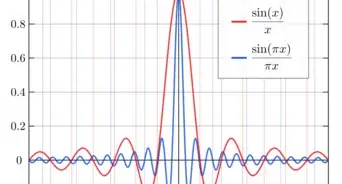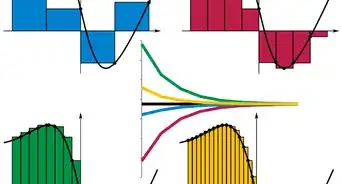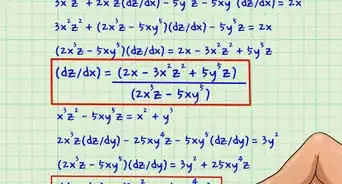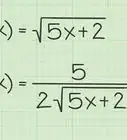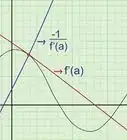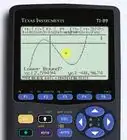wikiHow is a “wiki,” similar to Wikipedia, which means that many of our articles are co-written by multiple authors. To create this article, volunteer authors worked to edit and improve it over time.
This article has been viewed 30,290 times.
Learn more...
Line integrals are a natural generalization of integration as first learned in single-variable calculus. Rather than an interval over which to integrate, line integrals generalize the boundaries to the two points that connect a curve which can be defined in two or more dimensions. The function to be integrated can be defined by either a scalar or a vector field, with the latter much more useful in applications. As with single-variable integration, line integrals have a corresponding fundamental theorem that makes evaluation much easier.
Steps
Scalar Fields
-
1Apply the Riemann sum definition of an integral to line integrals as defined by scalar fields. We want our function to be a function of more than one variable, and our differential element must only depend on the curve itself and not the coordinate system we are using. As seen by the diagram above, all we are doing is generalizing the area under a curve as learned in single-variable calculus, whose path is restricted to the x-axis only. This step is not necessary to solve problems dealing with line integrals, but only provides a background to how the formula arises.
- This form should seem familiar to you. We are adding up rectangles with height and width These rectangles are bounded by our curve, as recognized by the variable, signifying arc length. Then, we take the limit as to recover the integral, where the is replaced by the differential Below, is the curve over which we are integrating.
-
2Reparameterize the integrand in terms of . While the integral above is true, it is not very useful, as the calculations can quickly become clunky. Inevitably, we need a coordinate system to work with - one that we can choose for our convenience.
- Consider the integral where is the right half of the circle
- Reparameterize by converting to polar coordinates. You can verify this parameterization by plugging it back into the equation of a circle and using the trigonometric identity
Advertisement -
3Reparameterize the differential element in terms of . Since our integrand is in terms of so does our differential element.
- Use the Pythagorean theorem to relate arc length to and
- Compute differentials of and
- Substitute into arc length.
- Use the Pythagorean theorem to relate arc length to and
-
4Set the boundaries in terms of values of . Our parameterization converted us to polar coordinates, so our boundaries must be angles. We are dealing with a curve that describes the right half of a circle. Therefore, our bounds will be to
-
5Evaluate the integral. In the penultimate step, we recognize that is an even function, so a factor of 2 can be pulled out to simplify the boundaries.
Vector Fields
-
1Apply the Riemann sum definition of an integral to line integrals as defined by vector fields. Now that we are dealing with vector fields, we need to find a way to relate how differential elements of a curve in this field (the unit tangent vectors) interact with the field itself. As before, this step is only here to show you how the integral is derived.
- It turns out that the dot product is the correct choice here. The only contributions of the vector field to the curve being integrated over are the components parallel to the curve. The physical example of work may guide your intuition, as no work is done by a force perpendicular to the direction of motion, such as gravity acting on a car on a flat road with no inclination. This all stems from the fact that the vector field acts separately to each of the components of the curve.
-
2Reparameterize the integrand in terms of . As before, we must write our integral in a convenient coordinate system.
- Consider the integral where and is the curve from to This curve is the power function of degree where is any real number, so the parameterization is especially simple. Verify this by substituting back into the equation of the curve.
- Consider the integral where and is the curve from to This curve is the power function of degree where is any real number, so the parameterization is especially simple. Verify this by substituting back into the equation of the curve.
-
3Reparameterize the differential element in terms of .
- Relate to and in terms of
- Compute the differential.
- Relate to and in terms of
-
4Set the boundaries in terms of values of . Compute the dot product by substituting the expression for .
-
5Evaluate the integral.
- This expression is valid for any power function, so by substituting a value for we can evaluate this integral along that particular curve. A limit occurs when we take or the former describes the curve along the x-axis going up, while the latter describes the curve along the y-axis going across. A few examples are given below.
Gradient Theorem
-
1Generalize the Fundamental Theorem of Calculus. The Fundamental Theorem is one of the most important theorems in calculus, in that it relates a function with its antiderivatives, thereby establishing integration and differentiation as inverse operators. As it pertains to line integrals, the gradient theorem, also known as the fundamental theorem for line integrals, is a powerful statement that relates a vector function as the gradient of a scalar where is called the potential. Below, a curve connects its two endpoints from to in an arbitrary fashion.
- defines the vector field to be conservative. Therefore, conservative fields have the property of path-independence - no matter what path you take between two endpoints, the integral will evaluate to be the same. The converse is true - path-independence implies a conservative field.
- A corollary of this important property is that a loop integral for conservative evaluates to 0.
- Obviously, conservative fields are much easier to evaluate than non-conservative fields. Checking if a function is conservative or not will therefore be a useful technique for evaluating line integrals. The rest of this section will be working with conservative fields.
-
2Find the potential function. In order to skip what would be a tedious integral to compute, we can simply find the potential and evaluate at the endpoints.
- Consider the function where we want to evaluate at the endpoints to Remember that conservative fields are path-independent, so we can use the gradient theorem.
-
3Partially integrate with respect to each variable. Each component of the vector field is a partial derivative of the potential Therefore, in order to recover that potential, we need to integrate each component with respect to the same variable. The caveat here is that this process can only recover part of the original function, so this step must in general be done with each of the components.
- The "constants of integration" and signify that some information is lost, just like how adding the constant in single-variable integration must be done because antiderivatives are not unique. Now, we just do the integrals.
-
4Fill in the constants of integration. Notice that and Doing the integrals revealed single-variable terms. These terms are covered by the constants of integration in the other evaluation. The actual constant is still there, but for our purposes, we can neglect it. We have therefore found the potential function up to a constant.
-
5Evaluate at the endpoints. This process of integrating skips the dot product and avoids the messy integration that would have resulted if we were to parameterize in terms of















































![{\begin{aligned}&\int _{{0}}^{{1}}[(t^{{2}}t^{{n}}-t^{{n}}){\mathbf {i}}+((t)(t^{{2n}})){\mathbf {j}}]\cdot [{\mathrm {d}}t{\mathbf {i}}+nt^{{n-1}}{\mathrm {d}}t{\mathbf {j}}]\\&\int _{{0}}^{{1}}(t^{{n+2}}-t^{{n}}+nt^{{3n}}){\mathrm {d}}t\end{aligned}}](./images/1637359387-3e1832819dd6c26ce3324012dd8165e496fd5c51.webp)



























